Low Impact Development
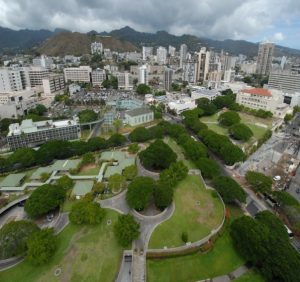 Low Impact Development (LID) is a planning and development approach that is more environmentally sustainable than conventional development. LID integrates landscaping and stormwater management design strategies to preserve or enhance the natural hydrology of a site, mimicking the watershed patterns that existed before development. LID Best Management Practices (BMPs) emphasize the conservation and use of natural features within a site, reducing stormwater runoff and promoting natural processes such as infiltration, evapotranspiration, or reuse of stormwater where it is generated to protect the water quality of streams and the ocean. An essential principle of LID is recognizing that stormwater isn’t just a by-product to be discarded but rather a valuable resource to be conserved, protected, and reused.
Low Impact Development (LID) is a planning and development approach that is more environmentally sustainable than conventional development. LID integrates landscaping and stormwater management design strategies to preserve or enhance the natural hydrology of a site, mimicking the watershed patterns that existed before development. LID Best Management Practices (BMPs) emphasize the conservation and use of natural features within a site, reducing stormwater runoff and promoting natural processes such as infiltration, evapotranspiration, or reuse of stormwater where it is generated to protect the water quality of streams and the ocean. An essential principle of LID is recognizing that stormwater isn’t just a by-product to be discarded but rather a valuable resource to be conserved, protected, and reused.
Goals of LID
LID’s objective is to minimize the environmental impact of development on water resources while upholding the developer’s intended purpose and vision for the site. Numerous LID concepts involve on-site treatment methods that don’t rely on physical structures; leading to lower infrastructure expenses and potentially raising the property’s value compared to typical development systems that require costly maintenance. The goals of LID include:
• Prevent environmental impacts rather than having to mitigate them;
• Manage water quantity and quality as close to the source as practicable and minimize the use of large or regional collection and conveyance systems;
• Preserve natural areas, native vegetation, and reduce impacts on watershed hydrology;
• Use natural drainage pathways as a framework for site design;
• Utilize less complex, nonstructural methods for stormwater management that are lower cost and require lower maintenance than conventional structural controls; and
• Create a multifunctional landscape.
LID offers substantial advantages to the municipality, developer, and the wider community. Employing a more compact design with more permeable surface and smaller infrastructure (such as stormwater drainage systems) leads to cost savings for developers. Less impermeable surface area also results in decreased surface runoff, thereby alleviating strain on municipal drainage systems. Furthermore, these practices curtail nonpoint source pollution in drinking water sources, recreational waters, and wetlands, ultimately preserving valuable water resources and avoiding the need for costly future restoration efforts.
Low Impact Development Practitioner’s Guide
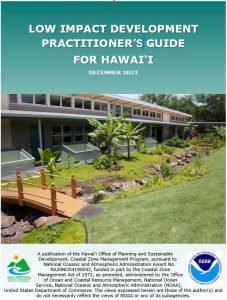 The Low Impact Development Practitioner’s Guide for Hawai’i provides informational guidance on how to plan for and implement Low Impact Development (LID) practices for new development and redevelopment in Hawai’i. LID consists of nature-based solutions aiming to preserve or enhance the natural hydrology of a place that existed prior to development. LID is intended to protect the quality, health, and supply of Hawai’i’s water resources and the environment.
The Low Impact Development Practitioner’s Guide for Hawai’i provides informational guidance on how to plan for and implement Low Impact Development (LID) practices for new development and redevelopment in Hawai’i. LID consists of nature-based solutions aiming to preserve or enhance the natural hydrology of a place that existed prior to development. LID is intended to protect the quality, health, and supply of Hawai’i’s water resources and the environment.
Implementing LID offers substantial environmental, economic, and community benefits to the developer, municipality, and the wider community which include:
• Protection of sensitive forests, wetlands, and nearshore habitats.
• Reduced impacts from flooding and erosion.
• Lower long-term life cycle costs.
• Increased property values.
• More aesthetically pleasing and naturally attractive landscapes within urban areas.
• Improved effects on public health.
The LID Practitioner’s Guide is intended to be used by the general public, developers, engineers, planners, and architects, State and county government staff, elected officials, businesses, conservation professionals and natural resource managers, and educators.
This update to the 2006 LID Practitioner’s Guide includes discussions of new and updated LID site design strategies and Best Management Practices (BMPs) and provides guidance for selecting the most appropriate LID for a development or redevelopment project. These LID BMPs include:
|
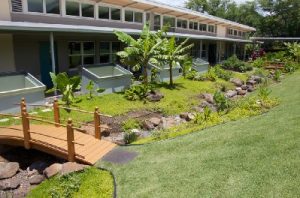 Rain Garden |
|
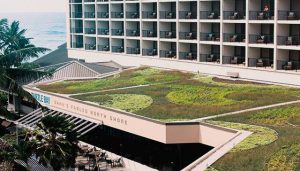 Green Roof |
|
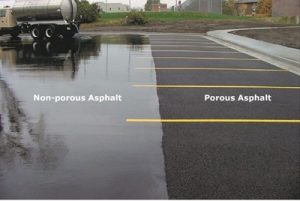 Permeable Pavement |
|
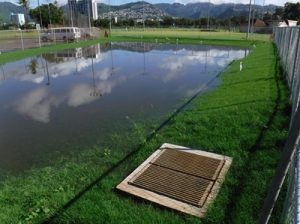 Detention Basin |
Decision Making Matrix
To be used in conjunction with the LID Practitioner’s Guide, the decision-making matrix is meant to serve as a tool to assist Guide users in the deployment of appropriate LID design best management practices (BMPs).
The matrix accounts for factors such as topography (slope), area in which LID features will be located, and the type of land-based pollutants to be controlled (e.g., sediment, nutrients, pathogens, pesticides, petroleum products, organic compounds, metals, or trash).
With these factors calculated, the matrix will recommend the best LID BMP design elements by a points system. Download the decision-making matrix here.
To view the original LID Guide, developed in 2006, please visit our Publications page.
